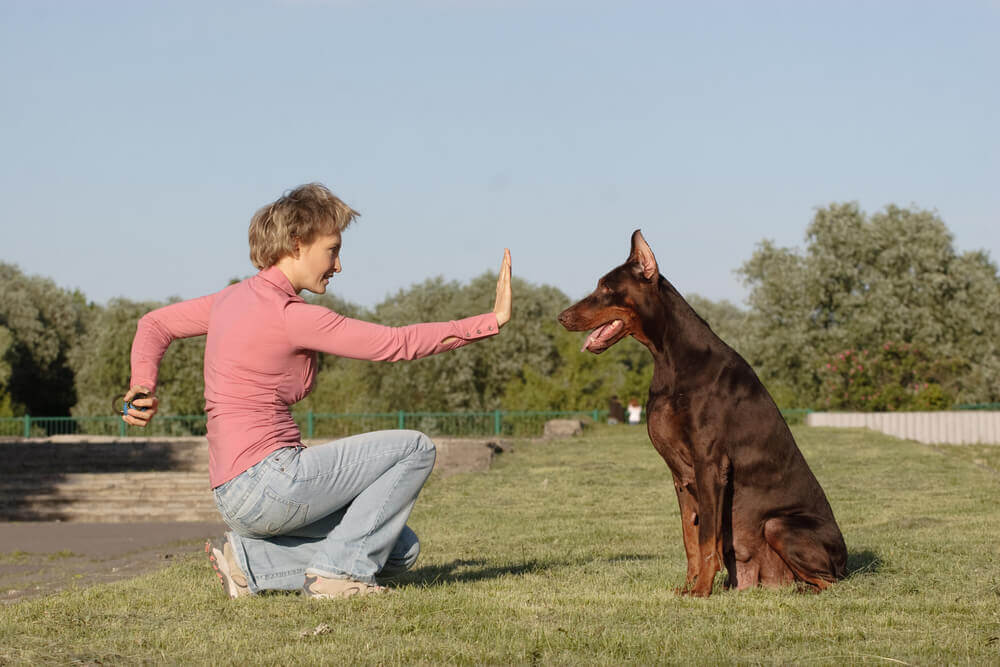There are many different reasons why dog owners may want to teach their dog hand signals for commands. For one thing, hand signals are essential for both dogs and owners that have poor hearing. However, it is also helpful to teach hearing dogs hand signals, even if their owner can hear as well.
Some studies have even shown that dogs tend to respond more quickly to hand signals than verbal commands without them. After all, most of us are not using hand signals in daily life. Luckily, you can use a hand signal for every command as long as they are unique from one another.
Here we'll show you how to teach your dog hand signals. Even if it is not a necessity for you to teach your dog this skill, it is still incredibly beneficial for everyone.
Let’s get right into our list of seven essential commands and their hand signals.
How to Teach a Dog Hand Signals
Teaching your dog how to understand hand signals is just as easy as teaching them verbal commands.
In fact, all you need to do is lure your dog into the position you want while giving the hand signal. Then, give your dog their reward once they complete it. Repeat this just like you would for verbal commands until your dog learns it.
Of course, you can give both the verbal command and the hand signal during this process if you wish to teach them both.
You can even have a hand signal for your marker word! A simple thumbs up is all you need!
It is important to mention that every hand signal you use will need to be unique from one another. Making hand signals the same or very similar to each other is likely to confuse your dog, and they may even do the wrong command as a result.
The Focus Command

The focus command is simple, and it involves just looking up at your face.
This command is extremely useful because it is a command that simply gets your dog’s attention in distracting areas.
It is also a great way to get your dog’s attention right before you need to give them another command such as heel or stay.
Teaching your dog to focus on you with hand signals is very easy because the lure and the signal can be the same thing!
- To start you need to get level with your dog by sitting on the floor or in a chair. (Depending on how large your dog is.)
- Next just point at your face when your dog is looking at you.
- When they look at you give them a reward and repeat!
Now your dog knows the hand signal for the focus cue!
The Sit Command
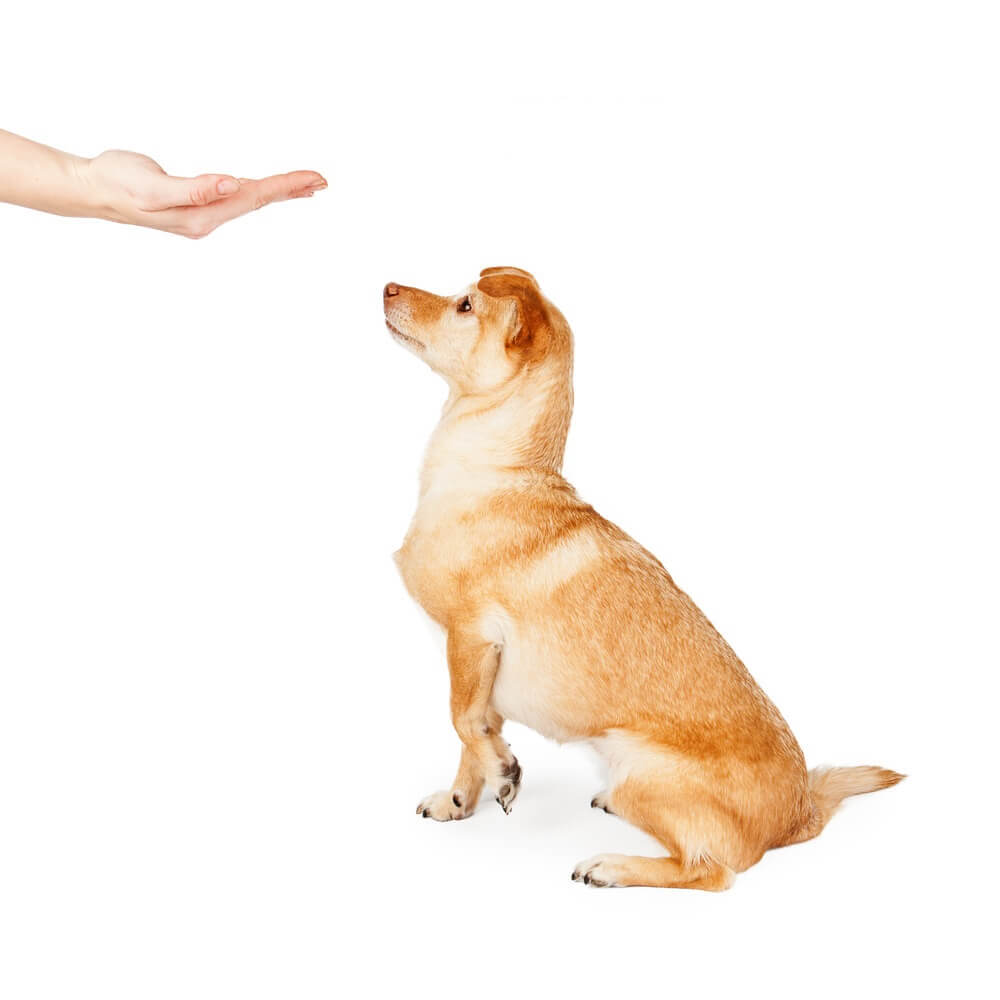
Sit is another basic and essential command that is easy to teach your dog.
Teaching your dog to sit is very important because it is a precursor to more complex important commands like stay.
Teaching the hand signal for sit is also pretty easy because the hand signal can be the lure most of the time.
- To teach sit have your dog in front of you and reach your hand out palm up.
- Have a treat in your fingers so your dog will be interested and smell your hand.
- Once they are smelling your hand, slowly lift your palm up without moving your arm. (your wrist should make a 90-degree angle)
- This motion will naturally cause dogs to sit when done slowly.
- When they sit, reward them, and then continue practicing.
Over time your dog will learn the hand signal!
The Lay Down Command
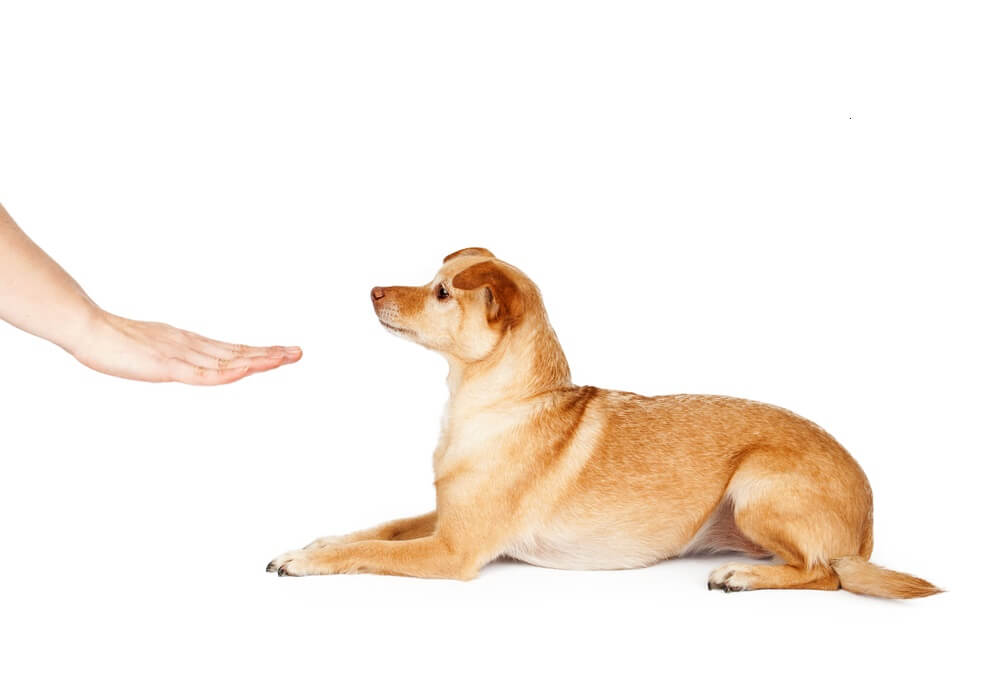
Lay down is also useful because it is a precursor for many other commands like stay. However, it can also be helpful for getting your dog to relax.
Luring dogs to lay down is a bit more difficult than sit, so luring and the hand signal will be different in most cases.
- You will need to start by luring your dog into a down position or by giving the verbal lay down cue if your dog knows it already.
- Once their belly hits the floor you should give the hand signal and reward them.
- This hand signal can be anything simple and unique from the other hand signals that you use. Many people choose to point at the floor.
- Now, all you need to do is repeat this process using the same hand signal.
The Stay Command
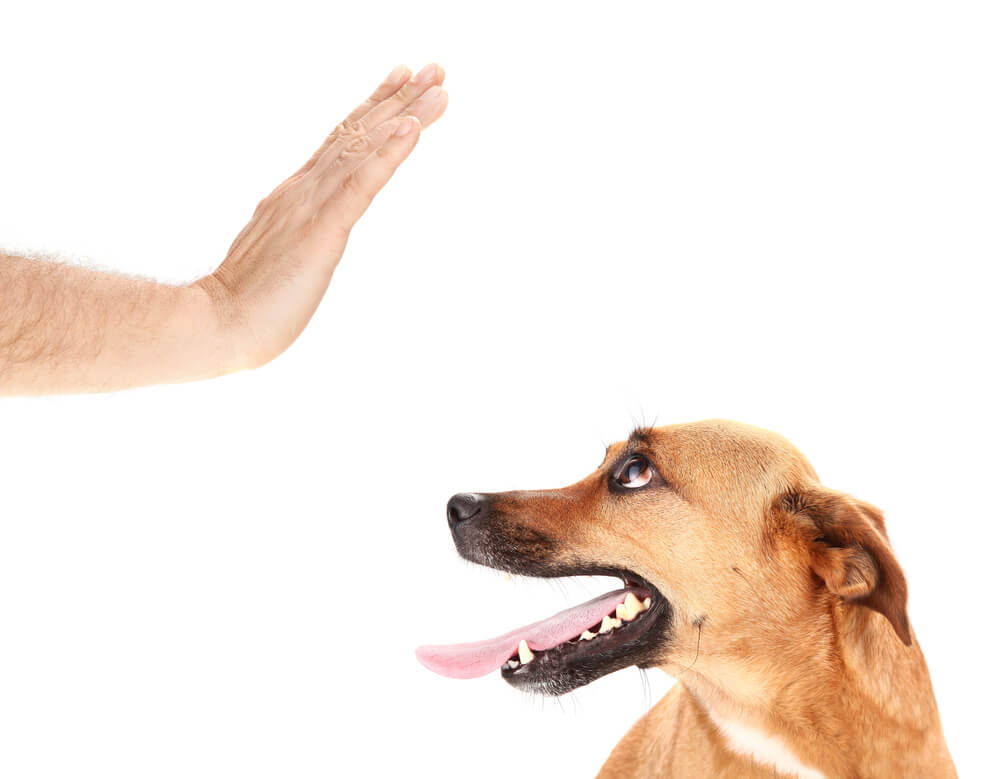
Stay is an incredibly important command.
Not only is it useful when doing things like opening the door and putting food on the table, but it could also potentially save a dog’s life.
Most of the time the hand signal for the stay command is showing your dog your open palm like in the photo above.
Repeat the process of showing your dog this hand signal and practicing stay. Teaching your dog to stay can be a bit tricky, and it takes a lot of practice and time to really get it right.
Consistently using the same hand signal and working up the amount of time that your dog is in stay is key. You will also want to work slowly with moving away from your dog when they are in stay.
The Heel Command
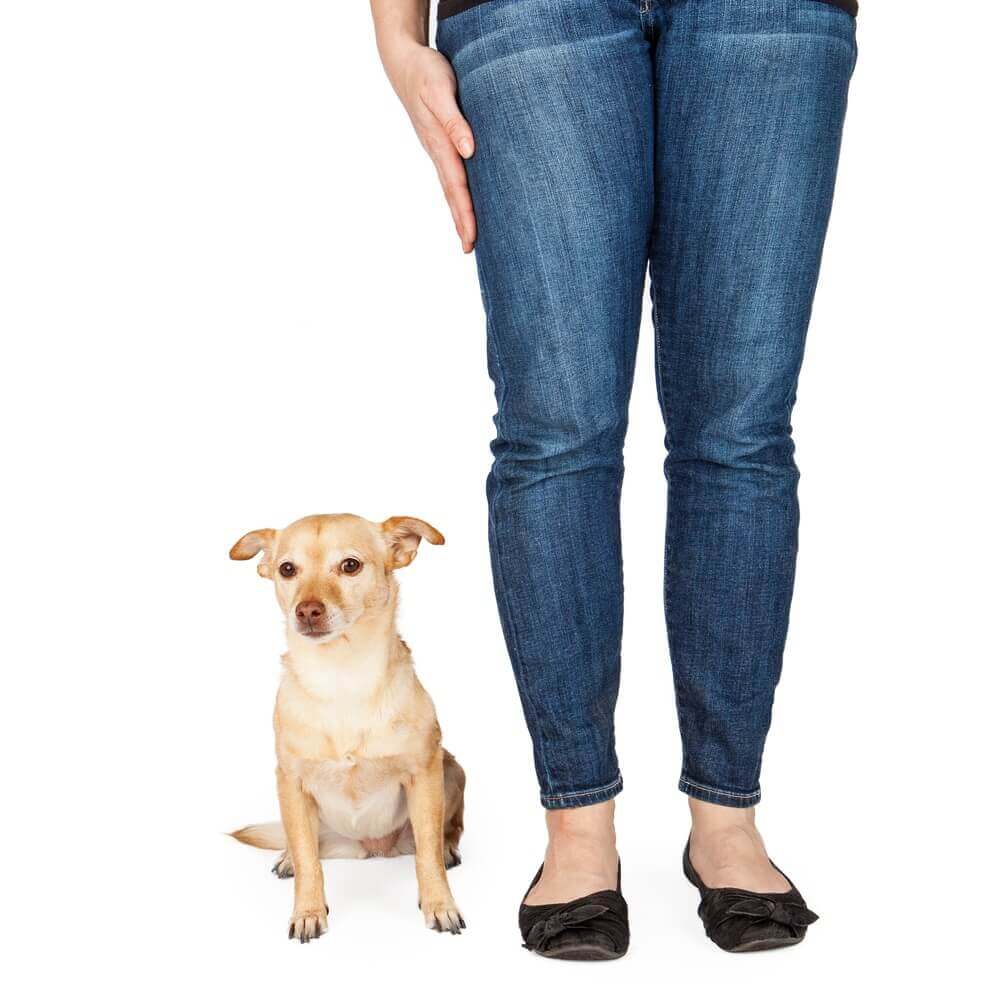
Heel is another extremely useful command that will help to keep your dog safe when out on walks.
Teaching the hand signal for heel is pretty simple, and you will likely spend more time trying to lure your dog into heel than actually teaching the hand signal to them!
- Start by having your dog sitting next to you at your side.
- Next, slowly walk forward with a treat in your hand at nose level. This will get your dog used to walking closely at your side.
- Next, start at the same position and pat your leg that is closest to your dog. This is the hand signal for heel.
- Continue practicing this and work towards fading the heel lure.
The Come Command (Recall)
Recall is an incredibly important and potentially life-saving command.
This is especially true if you plan on having your dog off-leash in public areas. Like with the other more complicated commands like stay and heel, teaching your dog to come to you will usually take longer than teaching them the hand signal for it.
To start off it is best to choose a hand signal that your dog can see from far away. Waving your hand over your head or holding your hand up high are great options.
- Once you have chosen a hand signal that is easy for your dog to see over long distances, you can start luring them.
- Lure your dog to you with treats while using the hand signal. It is a good idea to start off with a short distance in a low-distraction area and slowly increase it.
- Once your dog will come to you from a long distance you can then try it in places with more distractions.
If your dog has the ability to hear, it is also a good idea to use a verbal cue or another auditory signal such as the blow from a whistle. This is because your dog may not be looking at you when they are off-leash, so they might not see your hand signal.
The Leave It Command
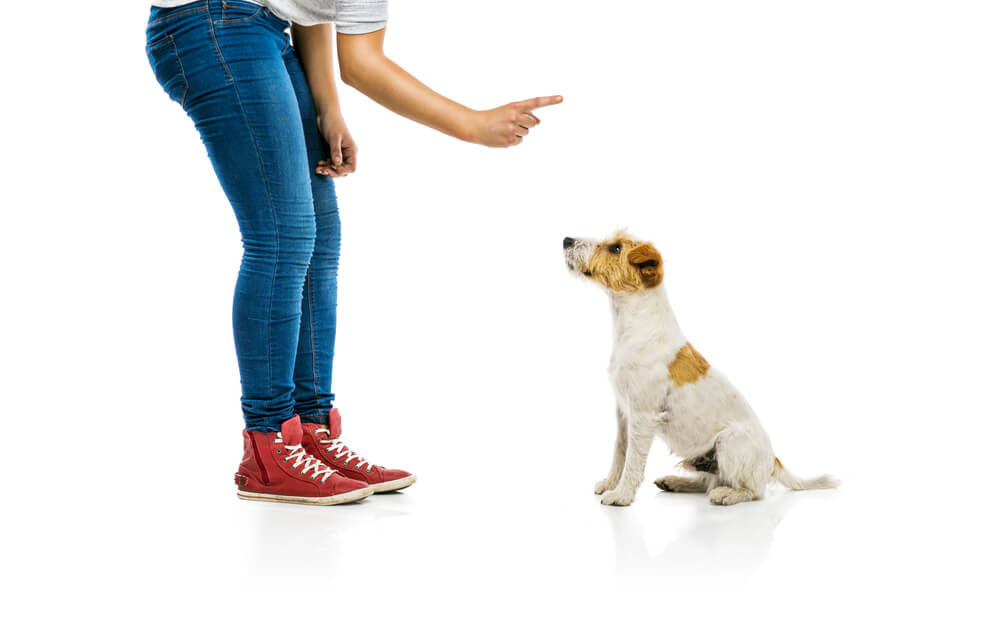
The leave it command will help prevent your dog from eating foods and objects that could harm them.
It will also prevent them from chewing up important objects like your shoes. As you can probably imagine, the leave it cue is endlessly useful for dog owners.
- To teach leave it to your dog start by holding a treat in your hand and waiting for your dog to look away from it.
- Once they do so, give your verbal marker and reward them with a different treat.
- Once your dog is looking away reliably you can present the treat in your hand and give your hand signal.
Like with lay down, there are many different hand signals for leave it. I personally like to do a sweeping motion with my hand. Think of the hand motion that you use when you say “nope”.
Any hand signal that is simple and unique will work.
Continue practicing it to teach the hand signal to your dog, and remember to be consistent! Once the basics are learned you can start making the task more difficult for them.

